If you are looking for bathroom cleaners, diapers, fish sausage and traditional Japanese medicine, there is only one place in Japan you need to go to: The drugstore.
Drugstores in Japan have evolved to something different than drugstores in other countries. With their wide assortment and fast replenishment, they are often more convenient than convenience stores.
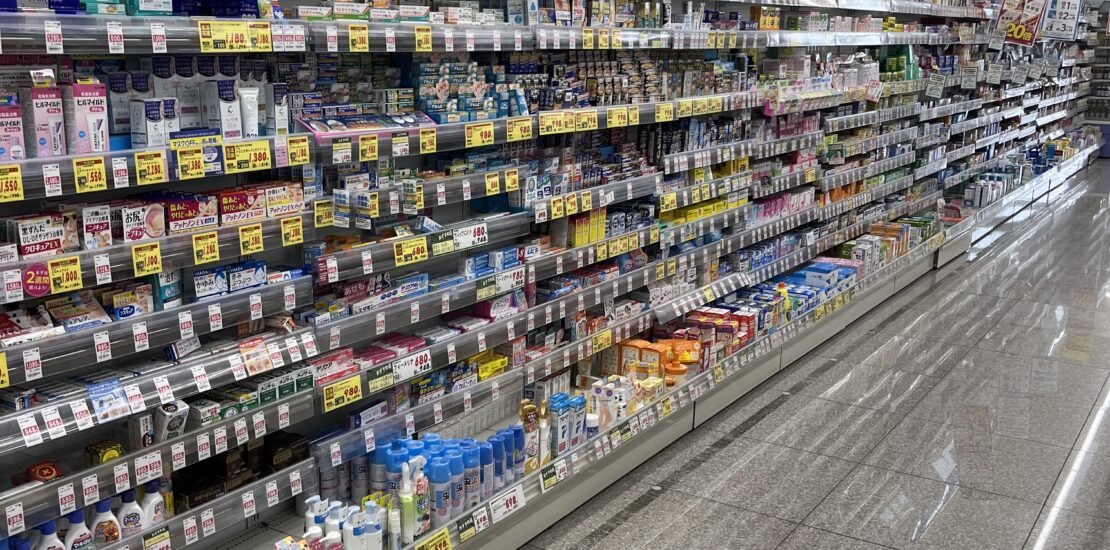
The Japanese Drugstore Has It All
One confusing thing about shopping in Japan is figuring out where to find things. Before the Meiji era, Japanese merchants didn’t really have stores but carried their merchandise to the customers. Even as recently as the beginning of this millennium, local stores would deliver tofu, rice, and sake daily.
Goods were provided directly by the manufacturers in their specialized stores. To do their daily shopping, housewives had to visit the fishmonger, the greengrocer, the fruit store, the butcher, the tofu maker, and the store selling condiments and spices, and maybe more. These were conveniently organized in shopping streets, often roofed over, and became the life of the neighborhood.
From Shopping Street to Shutter Street
The decline of shopping streets started with the rise of supermarkets, which conveniently had all your food needs in one place. As the proprietors aged, they gave up their specialized businesses, and the supermarkets took over. Shopping streets turned into shutter streets—a phenomenon where stores along Japanese streets are shuttered and the businesses closed.
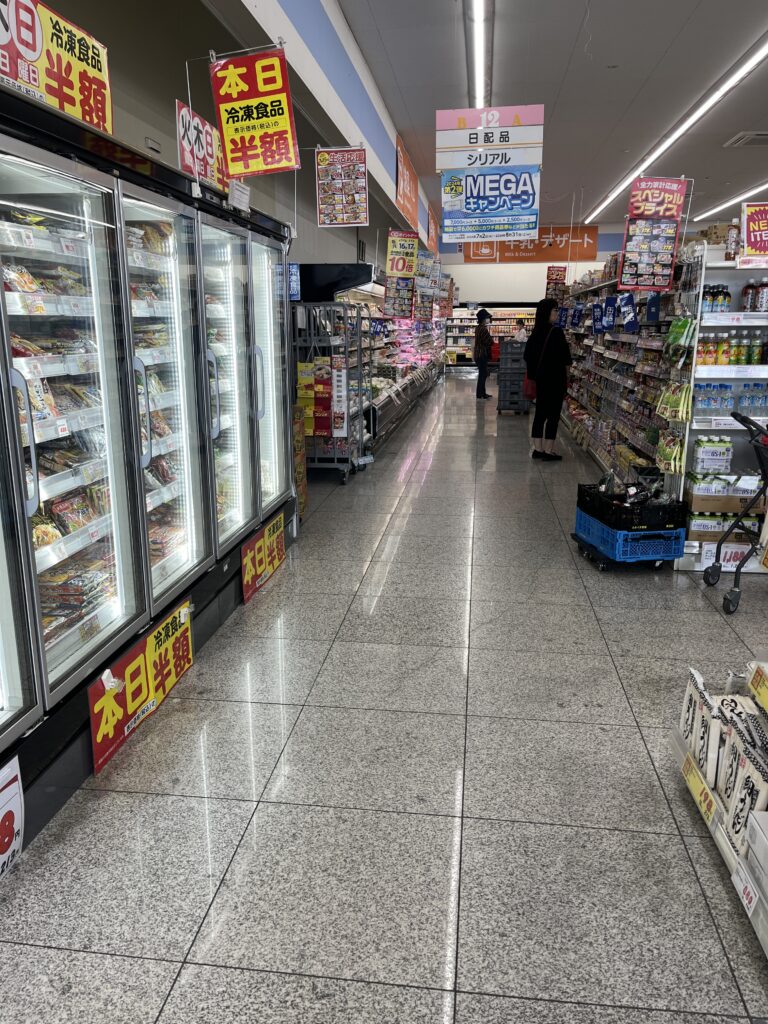
But supermarkets in Japan are grocery stores first and foremost. They are all about food, and while there are aisles for other things you need, they will be smaller and sparser. You will rarely find your specialized needs covered, even such common things as diapers (or nappies) and baby formula.
Medically Related Goods and More
In Japan, there is one place to go to find everything you need for anything remotely medically related. In a country where the word 薬 (kusuri) means not just medicine but also chemicals, the same stores provide both—and much more.
While they have their roots in pharmacies, drugstores in Japan are much more than pharmacies. Pharmacies in Japan dispense medicine on prescription (from a Japanese doctor) and have a very limited assortment of over-the-counter drugs. You will find them next to doctors’ offices, where patients can conveniently get the drugs they were prescribed.
Pharmacist in Residence
Drugstores usually have a pharmacist in residence, and their pharmacy department may rival traditional pharmacies in their selection and the speed by which they provide prescription medicines. So far, the “drug” part in the “drugstore” (usually abbreviated to “duraggu” in everyday speech) is no different from a pharmacy.
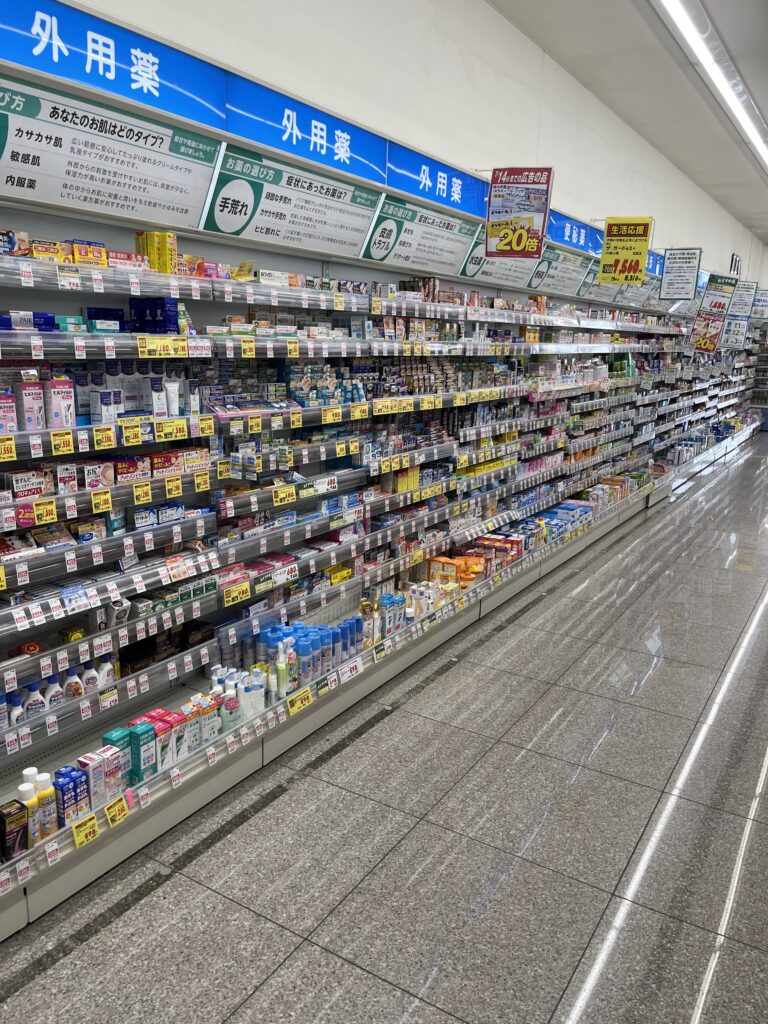
Understanding drugstores starts with the over-the-counter drugs department, which has morphed into something much more than just treatments for trivial illnesses.
The over-the-counter medicine counters in Japanese drugstores provide everything you need to self-medicate, including supplements, herbal medicines, and dietary aids. Especially, the supplements and dietary aids are full to the brim with things you will not easily find anywhere else.
In Japan, supplements have branched out from traditional Japanese medicine, which is herbal medicine aimed at restoring the balance of the body, just like traditional Chinese medicine. In Japan, you can occasionally find stores packed with herbs and animal parts, with the most exotic ones on display. These are traditional Chinese medicine stores, practicing the balancing of yin and yang, and their owners are trained TCM practitioners, mixing the medicine on the spot to cater to the individual needs of customers.
Japanese Traditional Medicine
Japanese traditional medicine, by contrast, is highly regulated. Japan is a signatory to all the international conventions regarding wildlife protection and animal trade (except for the international whaling convention). Not only is traditional Japanese medicine highly regulated (together with supplements), but it is also highly standardized. No tiger feet or rhinoceros horns here. Companies that make traditional medication and supplements are subject to the same level of control as pharmaceutical companies.
Except for the effect. You only have to show that your preparations are not dangerous. Since the idea is that the user takes them on their own initiative and for their own needs, the responsibility is with the individual user, not the doctor who prescribed them. That goes for both over-the-counter medicines, traditional herbal medicine, and supplements—which is why drugstores specialize in them.
That said, Japanese doctors often prescribe traditional medicines in parallel with western medications, as they do ease some conditions (like stomach problems, rhinitis, and sinusitis). In that case, the pharmacy will dispense them. But equally often, customers will get the medications themselves. Even though their insurance coverage often makes going to the doctor and getting prescription medication cheaper than buying over-the-counter medications, this takes time. And in a country of workaholics, time is of the essence.
From Soft to Beautiful Skin
There are other things that are not covered by insurance—liniments for muscle pains, preparations to ease insect bite pain, and creams to heal cold sores or make the skin soft.
Softening the skin is a short step from concealing any spots or wrinkles that may come with age, and an even shorter step from there to full-blown cosmetics. Every drugstore worth its salt has a cosmetics department. In the bigger stores, it may cover several aisles and have everything from hair mousse to toenail polish. Japan has a huge cosmetics industry, and even though imported Korean cosmetics are making headway among young people, the drugstore is where you go to get them.
If you want to look good, it means staying slim, and dietary aids feature heavily in Japanese drugstores. If you need to lose weight, this is where you go.
Special Food Shelves
And also if you want other specialized foods and associated products. Child formula (breast milk substitute) is one of the many products you will find on the baby goods shelf, together with meals and snacks for kids not yet ready for adult food. Snacks and sweets are a big part of what you will find in drugstores, both ordinary and diet versions.

And this is also where you find diapers (or nappies), both for children in a bewildering array of types and sizes (パンツ means panty-type, テープ means the type you close with a strip of tape).
Child diapers are slowly being crowded out by adult diapers, a reflection of Japan’s aging population. So is the expanding pet product shelf, or shelves. Dogs are incredibly popular in Japan, often pampered more than any baby would be.
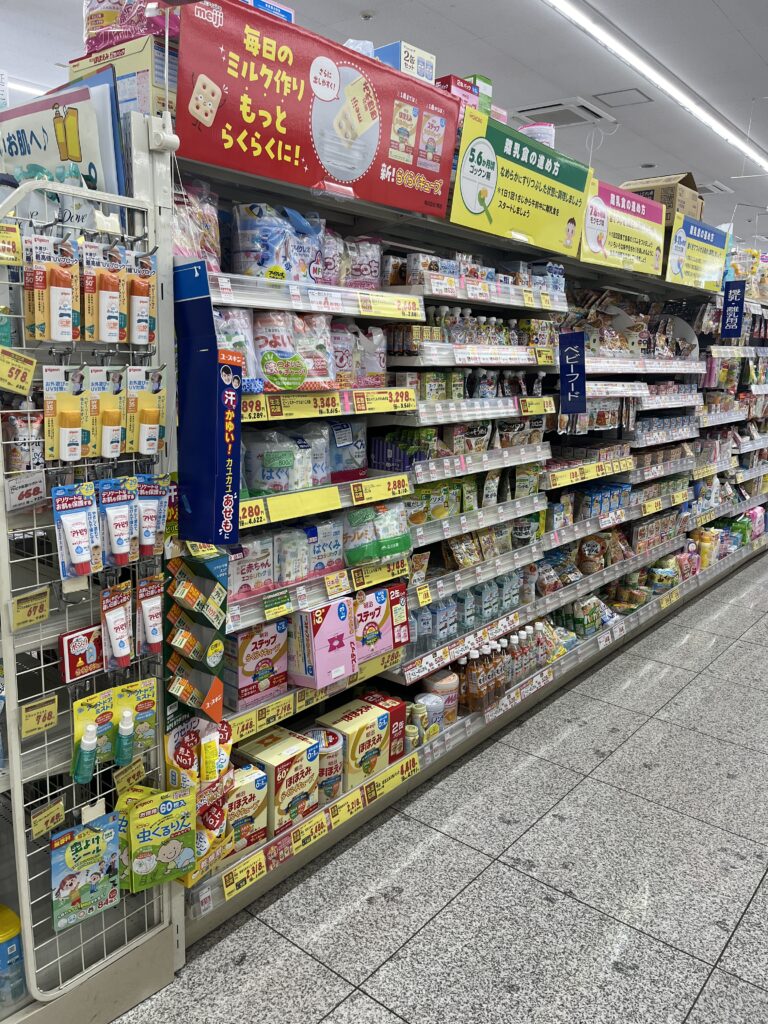
Drugstores now carry many more kinds of food than they used to. They used to only carry dry foods, but now they have large freezer sections, as well as fresh foods. To some extent. And alcoholic and soft drinks. They are consistently cheaper than ordinary grocery stores in this regard.
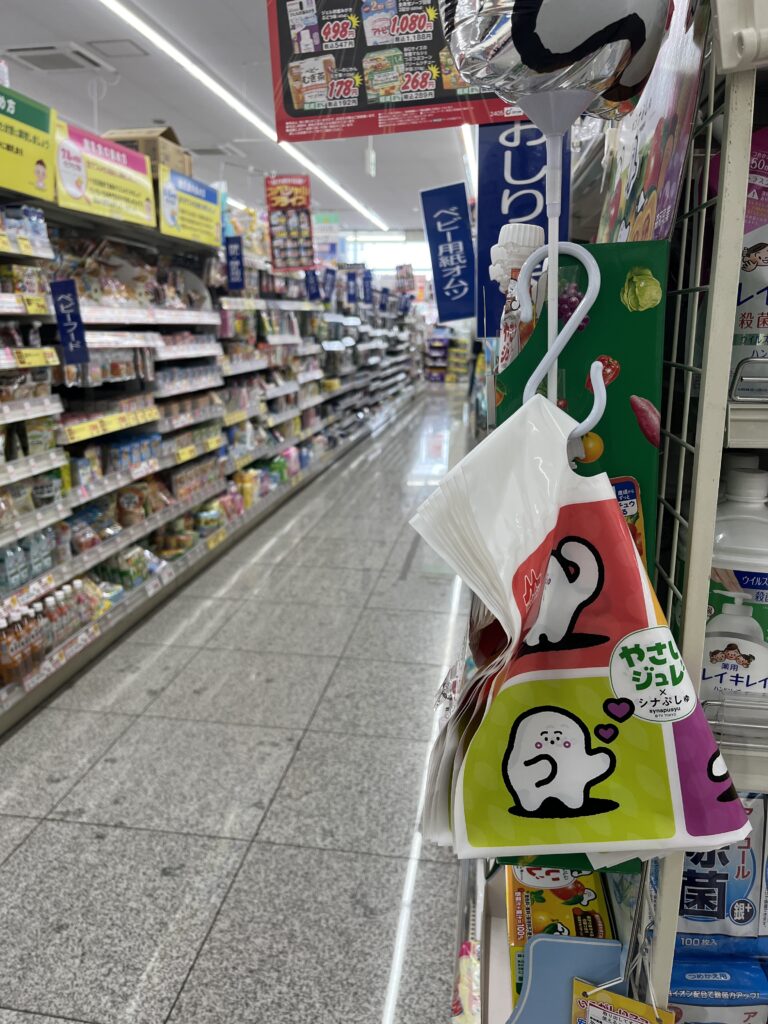
And that is not the only way Japanese drugstores support everyday life. They carry a bewildering array of daily necessities, from kids’ school notebooks to bathroom cleaners. Often in varieties that rival hardware stores. There may only be one or two of each item, but it is there when you need it, thanks to Japanese drugstores being stocked as often as convenience stores—which means at least once a day.
Related Articles
Warning: Undefined array key "sfsi_threadsIcon_order" in /home/veremosglobal/tokyoroomfinder.com/public_html/blog/wp-content/plugins/ultimate-social-media-icons/libs/controllers/sfsi_frontpopUp.php on line 165
Warning: Undefined array key "sfsi_blueskyIcon_order" in /home/veremosglobal/tokyoroomfinder.com/public_html/blog/wp-content/plugins/ultimate-social-media-icons/libs/controllers/sfsi_frontpopUp.php on line 170
Warning: Undefined array key "sfsi_bluesky_display" in /home/veremosglobal/tokyoroomfinder.com/public_html/blog/wp-content/plugins/ultimate-social-media-icons/libs/controllers/sfsi_frontpopUp.php on line 266



